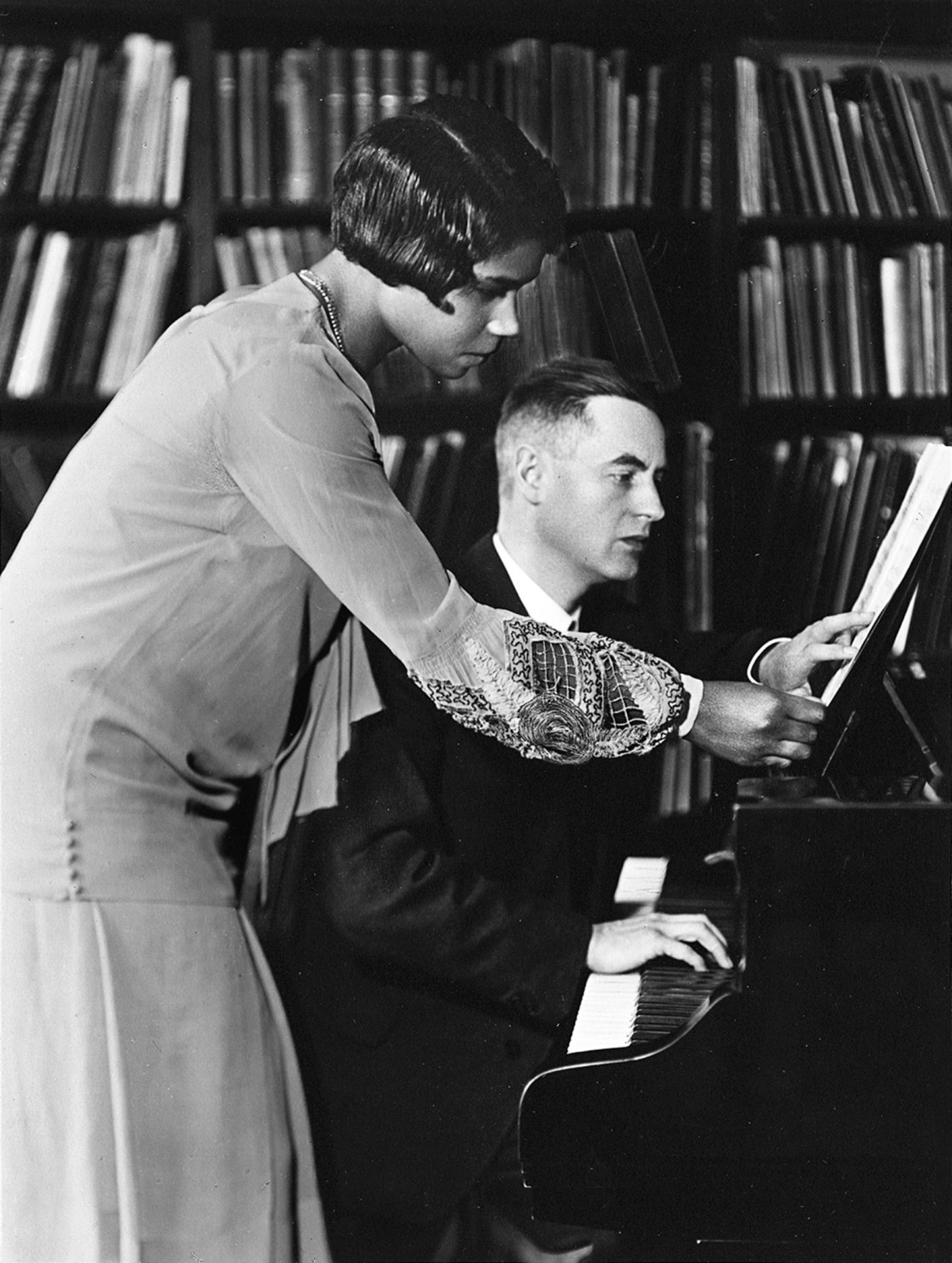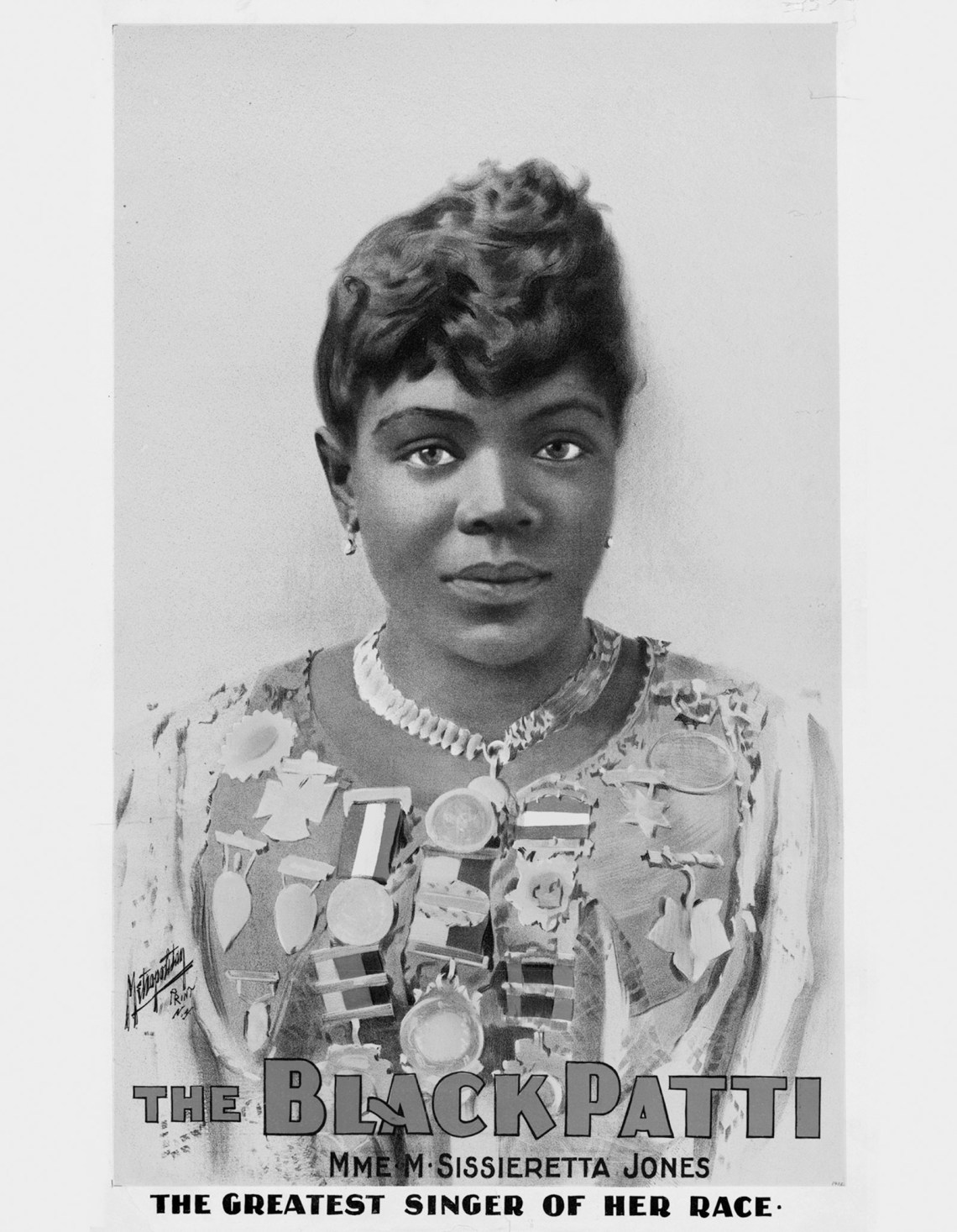In his book Wagnerism (2020), Alex Ross writes about what he calls “Wagner scenes” in literature—episodes in which a young concertgoer is spiritually transformed by an encounter with Richard Wagner’s music. One of Ross’s most fascinating examples is “Of the Coming of John,” a chapter in W.E.B. Du Bois’s The Souls of Black Folk (1903), in which Du Bois turns to fiction to describe the intellectual awakening of a young Black man from a small town in Georgia. John Jones’s epiphany comes when he attends a performance of Lohengrin in New York and feels a new world opening up: “The infinite beauty of the wail lingered and swept through every muscle of his frame, and put it all a-tune.” In his ecstasy, he inadvertently touches the arm of the white woman next to him, whereupon her male companion complains and Jones is ejected from the hall.
The bitter moral of Du Bois’s tale is that for a Black American of his time, high culture is a trap. Studying Greek and geometry at college gives Jones a “dignity” and “thoughtfulness” that are visible in his appearance. But it also makes him “feel almost for the first time the Veil that lay between him and the white world,” Du Bois writes, as Jim Crow America prevents him from using or enjoying his knowledge. “Does it make every one—unhappy when they study and learn lots of things?” asks Jones’s sister when he returns home. “I am afraid it does,” he says. To which she replies, “I wish I was unhappy”—conveying Du Bois’s sense that the life of the mind is worth suffering for.
“Of the Coming of John” helps make sense of Du Bois’s puzzling decision to attend the Bayreuth Festival in 1936, when it was closely associated with the Nazi regime. Writing about the experience in his essay “What of the Color-Line?,” Du Bois acknowledged the moral complications involved, noting that on his daily walk he passed the former home of Houston Stewart Chamberlain, Wagner’s son-in-law, who “did more perhaps than any one to establish in Germany the theory of Nordic superiority.” Chamberlain’s racist, anti-Semitic opus The Foundations of the Nineteenth Century was an important influence on Hitler, and Cosima Wagner, the composer’s widow, had been one of the führer’s crucial early supporters. Yet Du Bois writes admiringly about her and describes Bayreuth as a shrine to “the spirit of Beauty,” comparing it to Chartres Cathedral. As for Wagner’s operas, he has no doubt about their humanity and universality: “No human being, white or black, can afford not to know them, if he would know life.”
If Du Bois wasn’t deterred by Nazi Bayreuth, it was partly because he had a lifetime of experience separating the treasures of the human spirit from the institutions that administered them. For John Jones, the fact that a racist opera house was the only place to hear Lohengrin didn’t mean that the opera itself was tainted. On the contrary, the music was the best critique of the barbarism that surrounded it.
Du Bois found that for an African American, Nazi Germany was actually more welcoming than the United States. After five months visiting the country, he observed, “It would have been impossible for me to have spent a similarly long time in any part of the United States, without some, if not frequent cases of personal insult or discrimination. I cannot record a single instance here.” “What of the Color-Line?” originally appeared in Du Bois’s column in an African American newspaper, the Pittsburgh Courier, and he details for his readers the terrifying anti-Semitism that was visible everywhere in Germany in 1936, calling it “an attack on civilization” comparable to the Spanish Inquisition and the African slave trade. He insists, however, that on his travels there, “I have been treated with uniform courtesy and consideration.”
The idea that Black artists and intellectuals could escape American racism by moving to Europe is familiar from literary history: Richard Wright and James Baldwin, for example, spent their later lives in France. In Singing Like Germans, the historian Kira Thurman adds a new dimension to the story by focusing on African American classical musicians who studied, performed, or settled in German-speaking Europe. Many of them made avowals just like Du Bois’s. “In Europe there is no prejudice against my race,” said the soprano Sissieretta Jones, who toured Germany in the 1890s. “It is the artist[’s] soul they look at there, not the color of his skin.”
Josephine Harreld studied piano and conducting in Salzburg in 1935, when Austria was under fascist rule, but “the only experience of racism she shared came from white Americans,” Thurman writes. One fellow student, a Smith graduate, refused to sit with her at meals because, Harreld related in a letter to her parents, “her family has Negro servants. So for that reason she cannot overcome her prejudices.”
Advertisement
Many Black musicians felt elated and liberated to be living for the first time in a country without a history of slavery and segregation. But the reality of the German musical world was more complicated, as Thurman shows in this impressively and thoughtfully researched book. Singing Like Germans covers roughly a century starting in the 1870s, a period when Germany underwent repeated cataclysmic changes, and the experiences of Black musicians varied greatly by time and place. Marian Anderson’s lieder evenings in Vienna before the Anschluss belonged to a world different from that of Ella Lee’s debut as Tosca in Communist East Berlin in 1961.
What remained constant was the ideology of German music—the belief that the works of Bach and Mozart, Beethoven and Brahms, were the product of a unique national genius. For an African American to perform that music could be interpreted as a tribute to the German spirit or a desecration of it, a cause for delighted surprise or violent condemnation, but it always required some kind of interpretation.
When African American artists began to appear on European stages in the late nineteenth century, concert promoters used their race as a selling point. Sissieretta Jones may have claimed that in Europe no one cared about the color of her skin, but when she came to Berlin in 1895 she was billed as “the Black Patti,” after the popular Italian diva Adelina Patti. Thurman discovers that a singer named Jenny Bishop was using the same nickname in Berlin at the time, a source of amusement for the local press. “They both appear to be right,” one journalist wrote, “because the one is as Black as the other, and the one sings [as] beautifully as the other.”
Part of what these artists were selling was their story. Thurman quotes a profile of Jones in a Berlin newspaper that explained how a “simple Negro maiden” was discovered by Thomas Edison, recorded on his newly invented wax cylinder, and then taken under the wing of First Lady Frances Cleveland, who hired a music teacher for her and arranged for her debut concert in the White House.
Thurman describes this account as “wildly fabricated and sensational.” In fact, Jones, who was raised in Providence, Rhode Island, was trained at the New England Conservatory of Music. But if it tells us nothing of value about the singer, it’s quite informative about German expectations and fantasies. Thurman dwells particularly on the detail that Mrs. Cleveland challenged Jones’s music teacher to see if proper training could “overcome the unpleasant, strange, and unmelodic guttural sound” of her speaking voice. Here was a perfect colonialist fable of European culture overcoming African nature.
German critics implicitly affirmed that binary when they insisted, intending it as a compliment, that Jones wasn’t really Black. “The only thing ‘Black’ about her is the beautiful shining hair,” one reviewer said, while another protested that the “adjective ‘Black’ seems to us unnecessarily impolite.” To insist on the singer’s race would be to suggest that she hadn’t transcended it, as any Black person would have to do in order to participate in German musical culture. German audiences were also simply unfamiliar with how African Americans looked and often expressed surprise at how the category “Black” was defined. “A twist: Miss Jenny Bishop actually has a chocolate-brown coloring, and the epithet ‘Black Patti’ is therefore out of place,” one critic wrote about Jones’s rival.
More significant than the appearance of performers was whether the music they made “sounded” Black. In the chapter “Singing Lieder, Hearing Race,” Thurman shows that German writers habitually, perhaps unconsciously, described Black voices as sounding “black, purple, or blue—all dark hues.” A review of a Marian Anderson concert in 1930 described the contralto as having “a dark, blue-black voice” that “sounds somewhat unusual to our ears, exotic.” Roland Hayes, a tenor renowned in the early twentieth century for his interpretations of lieder, was described by a Viennese critic in 1923 as “somewhat guttural.”
It’s possible that German listeners really were hearing something new and distinctive in these performances. For audiences used to singers who were native German speakers, Anderson and Hayes might well have sounded “exotic” in ways that were hard to specify. Still, it’s clear that, as Thurman writes, “audiences often relied on biological notions of racial difference to understand a performance of classical music.” In one of the book’s rare passages of direct musical description, Thurman—a classically trained pianist who grew up in Vienna—analyzes Hayes’s recording of Schubert’s song “Du bist die Ruh,” which was made late in his life and “does not represent the African American tenor in his prime.” Even so, anyone who listens to it can hear that “guttural” is the last word that describes Hayes’s singing; Thurman notes its “feathery soft smoothness.” This is one of many examples in Singing Like Germans of how difficult it is to simply hear music, without distorting preconceptions.
Advertisement
Before World War I, German reactions to Black musicians were sometimes condescending or disdainful, but in the interwar period they turned menacing. After the Treaty of Versailles, German resentment crystallized around the presence of soldiers from Algeria and Senegal in the French forces occupying the Rhineland. Giving Black troops authority over white Europeans was thought of in Germany as a crime against nature, a “Black Horror.”
When Hayes came to Berlin to perform in 1924, he became a focus for this anger. A Black man singing Schubert in a hall named after Beethoven seemed to some Germans like a cultural reprise of the occupation, and the American consul warned Hayes not to come. He did anyway, taking the stage to “the sounds of booing and jeering,” Thurman writes. But according to press reports, when he began by singing the gentle “Du bist die Ruh,” his performance immediately disarmed the audience, and by the end of the night he was loudly cheered. Here was a story to feel good about, showing that music could be a universal language, transcending the illusory differences of race.
The Nazis, however, weren’t interested in such happy endings, and as they gained power, protests against Black musicians became more aggressive. Thurman contrasts Hayes’s concert with one given by the Pittsburgh-born singer Aubrey Pankey in Salzburg in 1932. Local Nazis posted flyers urging people “not to enable a Negro to take the daily bread of German artists,” and while Pankey performed, a crowd outside sang nationalist songs and “tried repeatedly to storm the building but were blocked by the police.”
Thurman quotes a review of the concert published in a right-wing newspaper the next day: “Whenever you see a Negro, you get the feeling that he has a quiet longing for his grasslands…. You believe him right away that he—in the true sense of the word—feels utterly out of place in Europe.” It’s hard to reconcile such abuse with Du Bois’s testimony that he experienced no racism in Nazi Germany.
After the Allied victory in World War II, Black performance in Germany took on new political meanings. One of the most interesting episodes Thurman writes about came in September 1945, when the Berlin Philharmonic performed under the baton of a Black conductor for the first time. (The pianist Hazel Harrison had become the first Black woman to perform with the orchestra in 1904, but this milestone was forgotten.) Rudolph Dunbar, a native of British Guiana who studied at Juilliard and made his career in London, was invited with the approval of the occupying Americans as a pointed rejection of Nazi racism and the cult of German music. Thurman quotes an American official who called Black musicians “the best assets in the reorientation of Germans.” To make the message even clearer, Dunbar conducted in uniform—he had been a war correspondent for the Associated Negro Press—and the program included the Afro-American Symphony by the Black composer William Grant Still.
The concerts were a success, but Dunbar was skeptical about the audience. “They flock to my concerts not because they want to hear my music, but because they want to hear how a Negro makes music,” he observed to the writer Ruth Andreas-Friedrich, who recorded their conversation in her diary. She wrote that Dunbar was “beautiful like a panther,” another example of language inadvertently betraying German assumptions about Africa and Europe, nature and culture.
But the most glaring irony was that Dunbar had opportunities in American-occupied Berlin that he would never have found in America itself. (The Metropolitan Opera didn’t perform under a Black conductor until 1972, when Henry Lewis led a performance of La Bohème.) During the cold war, Communist East Germany embraced Black musicians to rebuke American racism, much as the Americans embraced Dunbar to rebuke German racism.
Paul Robeson, an outspoken Communist sympathizer, performed a lieder concert in East Berlin in 1960, with “Ol’ Man River” on the program alongside Bach and Bartók. The East German press played up the event as proof of Communist antiracism, but Thurman writes that this strategy had its own pitfalls. A staged press photograph showed Robeson talking to an eight-year-old girl named Anka, who supposedly asked him to stay in the GDR; it was published in one East Berlin newspaper with the caption “Paul Robeson, Your Big Black Friend,” condescending absurdly to both Robeson and the reader.
This points to the central, unanswered question in Singing Like Germans. Thurman has uncovered a great variety of German responses to Black musicians, and she interprets almost all of them as expressions of racism. This includes not just the explicit hatred of Nazis and the prejudice of provincial nineteenth-century critics, but also responses that were intended to be affirmative and enthusiastic. Thus, after condemning German listeners who thought that singers like Anderson and Hayes sounded Black, Thurman also condemns those who thought they didn’t sound Black, such as one Viennese critic who praised Hayes: “Not as a Negro, but as a great artist, he captured and moved the audience.”
Thurman argues that such a compliment assumes “that whatever was Black could not also be universal.” Yet when another Viennese critic writes that Anderson’s singing showed “how the human heart speaks intelligibly to everybody,” Thurman criticizes the comment’s “universalizing tones” as predicated on a belief in the “supposed foreignness of [Anderson’s] musicianship.” As in many current discussions of race and cultural appropriation, there is a vicious circle at work here: insisting on difference is a problem, but so is insisting on the absence of difference.
Part of the problem is that Singing Like Germans is mostly about how Germans thought about Black musicians, not the other way around. This may simply be due to the nature of the available evidence: musicians generally don’t theorize about their calling, so there will always be more written about them than by them. What Thurman does quote from letters, diaries, and memoirs, however, suggests that many African American musicians shared the belief that German art music represented a higher spiritual realm. About his alma mater, Fisk University, the historically Black college in Tennessee, Du Bois wrote that “no student ever left Fisk without a deep and abiding appreciation of real music.” “Real music, of course, meant classical music, and usually the music of German composers,” Thurman notes.
Indeed, the Black classical musicians we meet in Singing Like Germans were at pains to distinguish themselves from popular and folk musicians. Thurman shows that in the 1920s, Anderson’s public image was formed in opposition to that of Josephine Baker. Both singers became famous in Europe at the same time, but the latter represented “erotic primitivism,” while the former was “pious, modest, respectable.” The difference had to do not just with their personalities but with their genres: classical music was refined, bourgeois, and European, holding itself aloof from the vulgar American energy of jazz.
A more interesting contrast, perhaps, would be between Anderson and Bessie Smith. The two singers were contemporaries—Anderson was born in 1897, Smith in 1894—and both made their first recordings in 1923. But while success for Anderson meant performing Brahms and Wolf for an audience of a few hundred Viennese connoisseurs, Smith’s blues records sold by the hundreds of thousands, and she became the highest-paid Black entertainer in America. In the process, she helped redefine American music as African American music, as it would remain through the twentieth century with blues, jazz, rock and roll, R&B, soul, and hip-hop.
By comparison, Anderson, Hayes, and other classical musicians in Singing Like Germans look a little like the neo-Latin writers of the Renaissance, who staked their fame on a traditionally prestigious language at just the moment when almost everyone stopped reading it. Thurman offers valuable insights into how Germans viewed these Black artists, but it would be still more interesting to know how they viewed themselves.
This Issue
February 10, 2022
Our Lady of Deadpan
Picasso’s Obsessions
In the Beforemath




